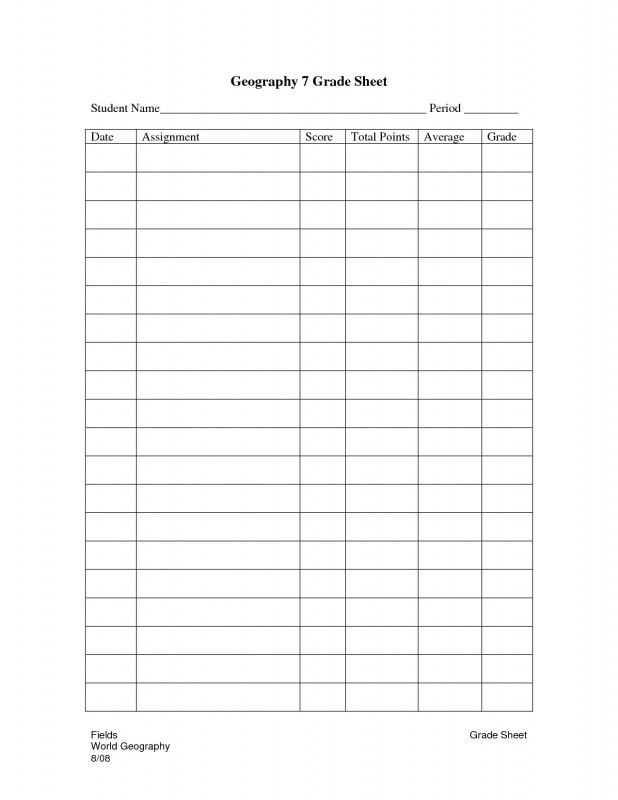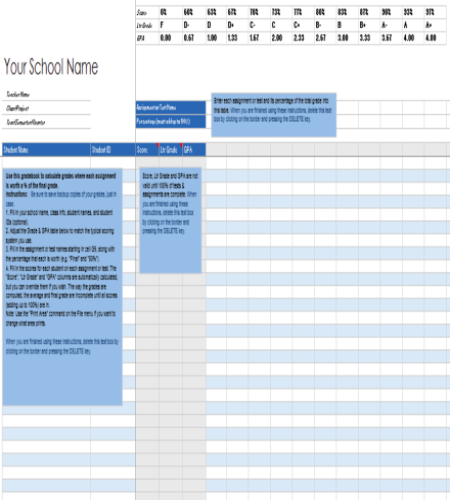Our educational system uses grades to determine the amount of progress that a student has achieved after his efforts in school. It is a tangible form of assurance that the pupil did his part and participated in the curriculum-mandated activities. Every assignment, seatwork, group task, project, even their behavior will be graded.
All of this data will then be recorded on the teacher’s grade sheet, which will then be distributed to relevant parties such as the student’s parents.
[bb_toc content=”][/bb_toc]
Grading sheets are very helpful in providing students with feedback on their learning and making them see, through an objective and more technical perspective, the academic aspects in which they can improve. It can also help teachers assess the progress that their students are making so that they can make better teaching decisions in the future.
However, a grade sheet is not only composed of numbers or letters signifying the academic success of the students. It also needs to contain the following elements to be considered sufficient:
- Grading criteria: Before the semester begins, you should already have an idea on what particular skills and values are most significant to you. This can give you more focus when assessing your students’ performances on quizzes, examinations, lab reports, essays, class participation, and oral presentations. For example, you have this one student that’s particularly energetic when it comes to class performance. Well, instead of giving him a “Good Job” on his grade sheet, give his work a distinguished level. An A for excellent, a B for very good, a C for fair to good, and a D for poor. This way, it’s more tangible and easier to understand.
- Efficient grading: The assignments you give your students should have clear and consistent grading scales. You can use pluses and minuses for papers and essays, for example, or a hundred-point numerical scale for exams and projects.
- Meaningful feedback to students: Comments are an important part of every effective grade sheet, and you can use this to communicate to your students about your (objective) opinion on their performance. You can also use the space to tell them the aspects of their work on which they should give more focus.
- Maintained grade consistency: Make it a point to discuss grading policies, standards, and criteria for the students in your course so they will be able to predict exactly where to stand. You can also give them a brief run-through of your expectations in grading to make sure that they are thoroughly briefed on how you run things in your class.
- Minimized student complaints about grading: This may sound difficult since there will always be parents who ask questions to which the answers are obvious, and students who like to go through every reason why they don’t have a perfect A+. But you can minimize their complaints by including your grading policies in your syllabus for the world to see. You can simply distribute your grading criteria to students at the beginning of the semester, and should any unnecessary bombarding of questions take place, you can simply refer to it.
14+ Grade Sheet Templates & Examples
Grade Sheet Example
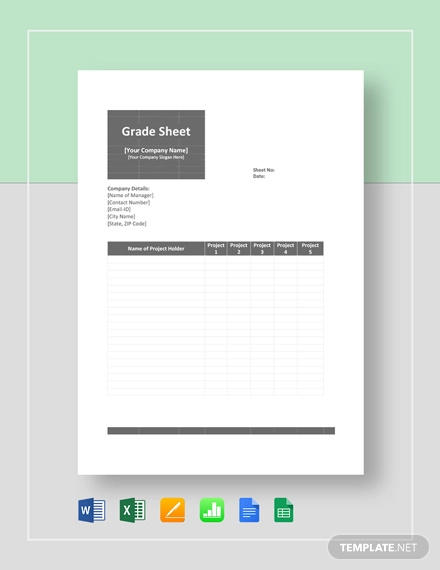
Student Grade Sheet Example
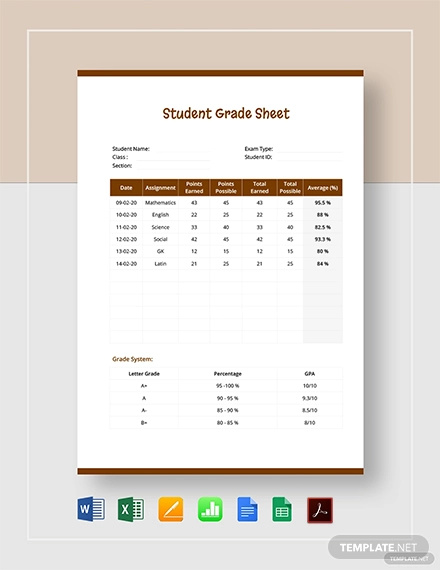
Monthly Grade Sheet Template

Blank Grade Sheet Template
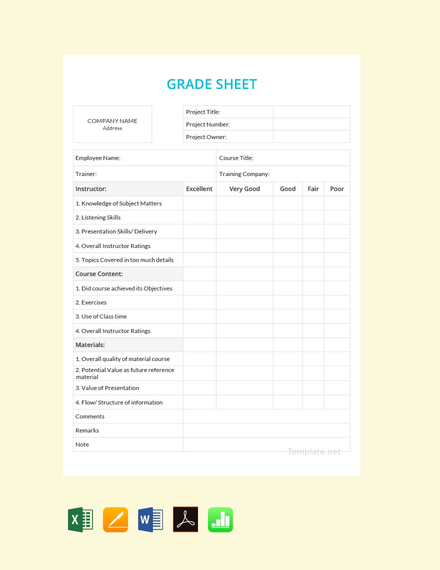
Teacher Grade Sheet Template
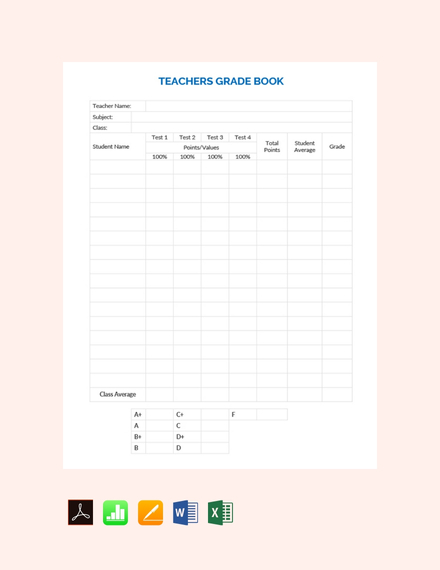
Weekly Grade Sheet Template

Employee Grade Sheet Template
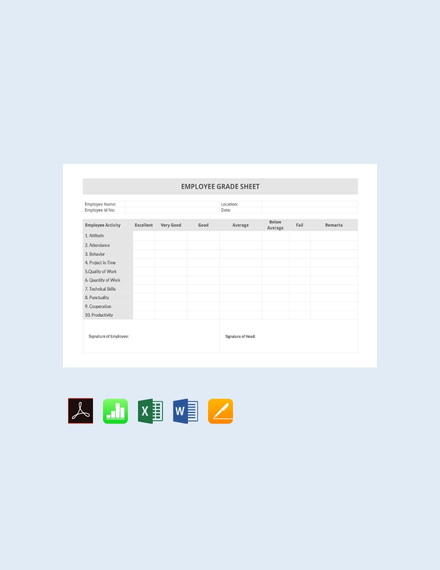
School Result Grade Sheet Template
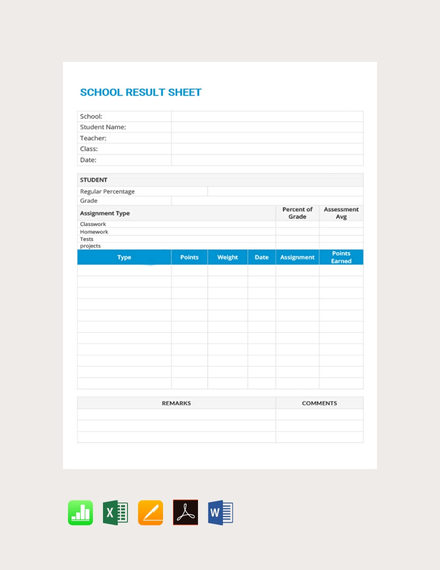
Sample Grade Sheet Template
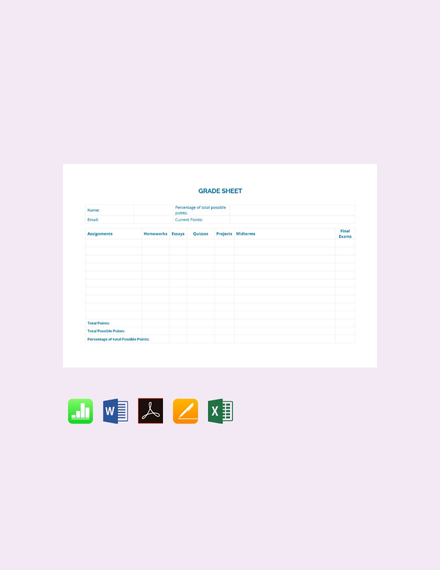
Presentation Grade Sheet Template
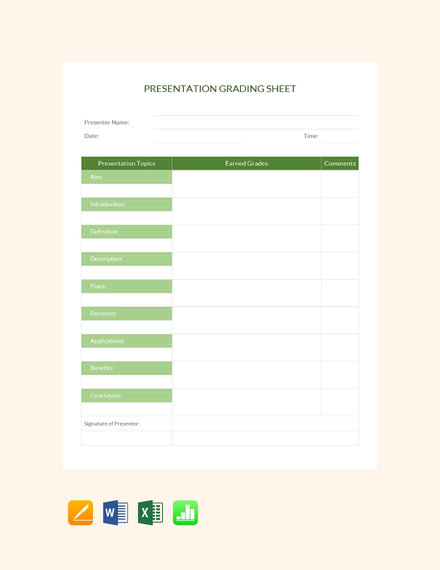
Simple Grade Sheet Template
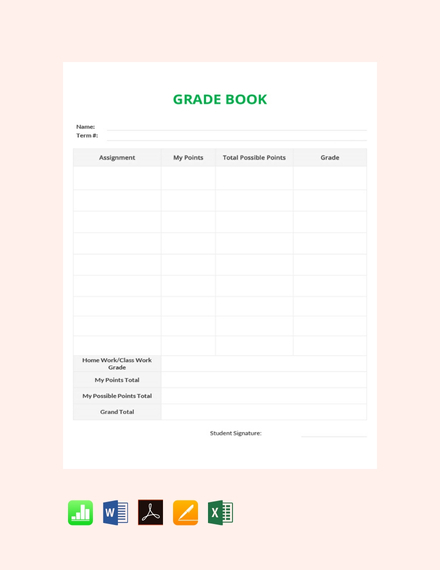
Subject-Wise Grade Sheet Template
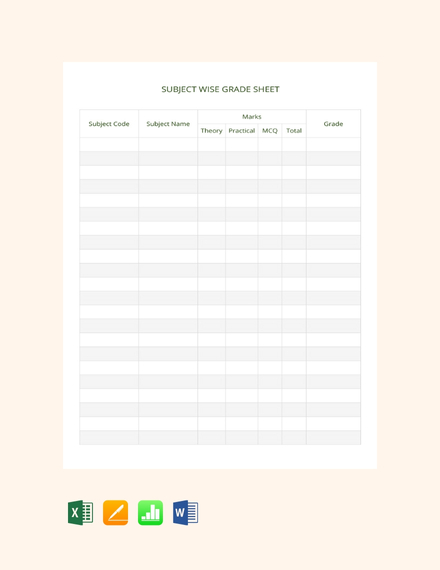
Geography 7 Grade Sheet
Student Grading Sheet Template
School Assignment Sheet Template
Laboratory Grade Sheet
MSSC Grade Monitoring Sheet
Simple Tips for an Excellent Grade Sheet Layout
- Start on a positive note: Students are scared of grade sheets, and whether they are being irrational or not is out of the question. Try to begin your comments on the grade sheet with a general statement expressing your happiness in seeing the student learn and grow. You can also address comments to the child’s parents letting them know how much academic and social progress their child has achieved during that academic quarter.
- Provide specific information across several different areas: Your students’ parents don’t just want to know what scores their child got. They also want to know what you think about the score their child got. After all, you’re the one who was able to observe them carefully, which is why you are expected to provide a helpful feedback. For example, you can give specific, more encouraging feedback on how the child performs in reading, writing, and math.
- Set a goal: One effective way to make sure that your students will have a considerable improvement by the end of the semester is to provide them with at least one specific goal that they can work on along with you. This is to assure that all of their energy will be directed towards one place.
- Closing: Try to end your grade sheet on a positive note to give your students a boost of confidence, even if they failed most of their subjects. A negative feedback can only do more bad than good at this point. Make them feel that you are proud of them regardless of their grades.
Types of Grade Sheets
Here are a few types of grade sheets that can help any swamped teacher keep track of attendance, homework, and grades throughout the term:
- Weekly Point Sheet: This chart can help you track the behavior of your students if you are using a point system. A point system is where you reward points to your students for proper behavior, for example.
- Portfolio Final Evaluation (Teacher Rating): This grade sheet can help you evaluate all of the portfolios your students have submitted over the term.
- Portfolio Final Self-Evaluation: This type of grade sheet gives students a chance to conduct a self-evaluation of their own work.
- Portfolio Guide: This type of grade sheet is also a grading standard which your students can use to record the work they have done on their final portfolio.
- Assignment Record: As its name suggests, this type of grade sheet can help you record your students’ assignment results.
- Speaking and Listening Progress Chart: A speaking and listening chart will help you evaluate your students’ progress in public speaking and listening to lectures and speakers.
- Progress Chart: This type of chart helps assess a student’s progress. Plus, it’s intended to be easily distributed so your class can see how much improvement they have achieved.
- Team Evaluation Form: A students’ ability to work with his classmates is always an important aspect for learning. Grading a student’s performance within a team is made easier by this grade sheet.
Grade Sheet FAQs
How can I calculate grades with weighted percentages?
- Start by converting percentage to decimals, and then proceed by dividing each weight expressed as a percentage by 100 to convert to decimal.
- Then, multiply each grade by its weighted percentage.
- Lastly, total the weighted grades.
How can I calculate my grade?
Multiply that percentage score by the number for the category to find out how many points you earned for that category. For example, if you earned 95% in a category weighted at 20% (.95 × 20 = 19), you will earn 19 points for that category. Add numbers to get your class percentage.
Grading sheets are an important tool in making grading students’ performance easier. It also makes sharing the data with the parties involved, such as the students themselves and their parents, much more effortless.


